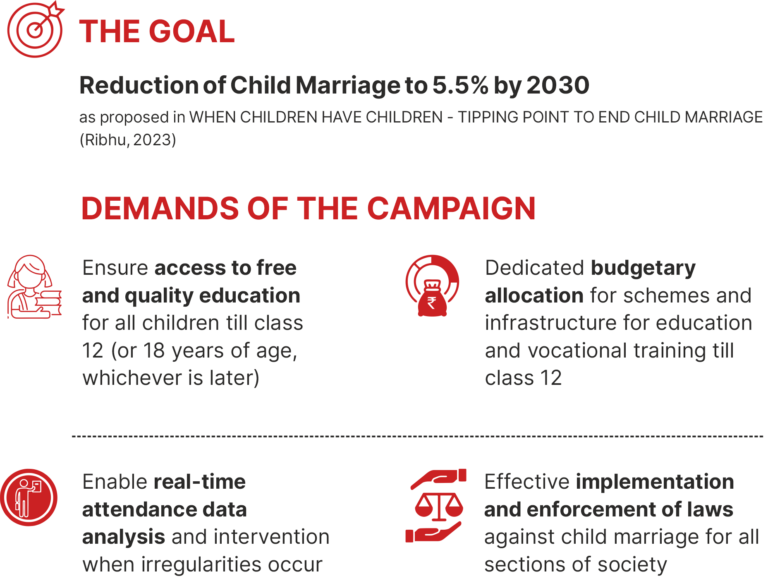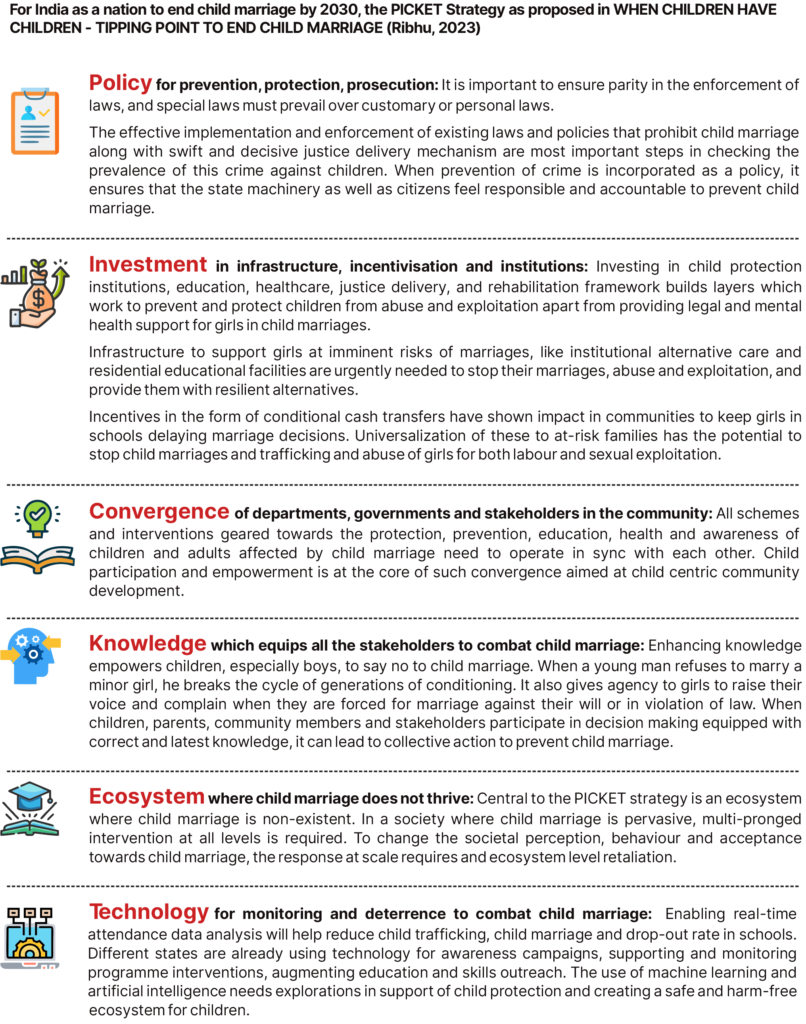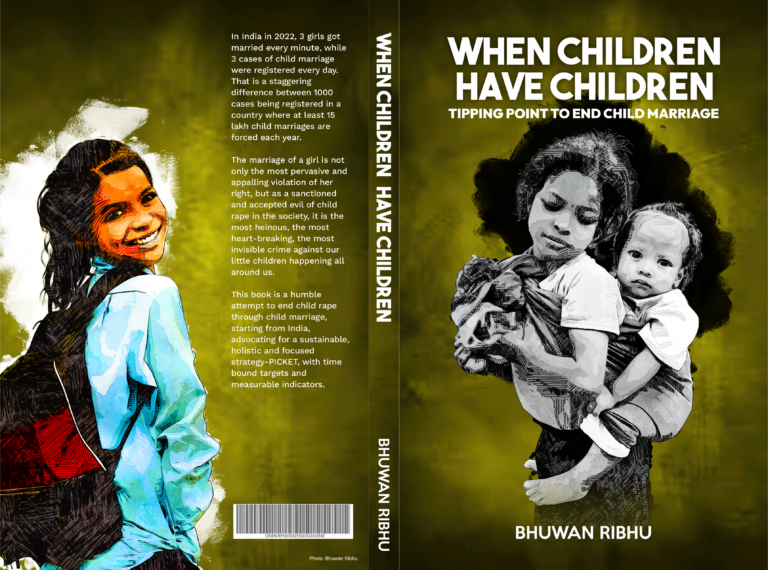
About Us
Rajasthan Mahila Kalyan Mandal (RMKM) is dedicated to the development of the deprived people ,backward and poor rural women, people with disabilities, child labour, ,victims of trafficking and violence for Health, Education, water ,sanitation, hygiene, Family Planning and safe abortion , Food, nutrition, and social security, sustainable agriculture of Ajmer, Churu, jhunjhunu, Bikaner and Sikar districts. The organization is working on the following issue of Child Marriage, Child Trafficking, Child Labour and Child Sexual Abuse, Legal and counseling support to POCSO Case victims. The organization participated and organized Child Marriage Free India Campaign in Ajmer, Churu, jhunjhunu, Bikaner and Sikar districts covering over 42 Block and 750 villages under the project Access to Justice Project Phase Two with support of Kailash Satyarthi Children’s Foundation Family Planning and Safe Abortion is with support from Ipas development Foundation
- Awareness for elimination of child labour, child marriage , child sexual abuse, child trafficking to Anganwari worker, Mata Samiti, Adolescent group, Jeevika Group members, Community others Male and Female .School teachers and Students.
- June and November Action Month -Rajasthan Mahila Kalyan Mandal (RMKM) conducted the action month with the objective of Child labour Free Sheohar and Rescued 14 children from shops and Dawa and 14 FIRs got registered and children were present before CWC and sent to Home . The campaign was conducted in collaboration with Dhawa Dal and Police, and child line departments and covered by news paper with an outreach of 10,000 directly and 5000 through online.
- 16 October 2023 – Child Marriage Free India Campaign Event – The campaign event was conducted in more than 750 village in collaboration with all line departments (ICDS, JIVEEKA, Adolescent girl group, community people, school teacher and students , Government officials.
- Campaign highlights: Candle light and Torch Fire Rally, Prabhat Ferri in 750 villages villages, Signature Campaign Gram Panchayat Level to District Level covering all district offices, Poster and Banner release and distribution, Book Release of “When Children have Children.” by ADM abd also book was given to DM, SDM, SP, DSP, ADCPU, Child marriage survivour, ICDS DPO
- Jagrukta Rath was Fagged off by DM,SDM,SP,,DSP, ADCPU,ADM, ICDS DPO , GOVT Officials and Media persons . To aware community for elimination of child labour, child marriage , child sexual abuse, child trafficking
- Nukkad Natak and Puppet show in all the 750 village for awareness to community for elimination of child labour, child marriage , child sexual abuse, child trafficking
- Identification of child labour and children out of school done for admission in school.
- Parents UNDERTAKING has take for not to Marry their Girl before 18 years of age and Boys before 21 years of age
- ALL the Mukhiya and Sarpanch have taken PLEDGE and Signed for making Child Marriage Free Panchayat
- District ,Block,Panchayat and Ward level Child Protection Committee (CPC) has Formed and their capacity has been done.
- Wall writing and hoarding at important place like school, panchayat bhawan, water tank, temple, masjid for child marriage free INDIA

Child marriage is not just an age-old social evil, but also a heinous crime that robs children of their childhood. Child marriage is a “crime against children” that violates basic human rights, minor girls are forced to marry and live a life of mental trauma, physical and biological stress, domestic violence including limited access to education and increased vulnerability to domestic violence. The consequences of child marriage are severe and extensive. Some of the specific consequences include: early pregnancies leading to complications and higher rate of maternal mortality and death of infants, malnutrition among both the infant and the mother, increased vulnerability to reproductive health, disruption in girl’s education and thereby reduction in opportunities of her personal and professional development, domestic violence and abuse, limited decision making powers in the household, and mental health issues.
India’s Census 2011 revealed 12 million children were married before attaining the legal age, of which 5.2 million were girls. Globally, child marriage is identified as a crime and a menace that needs to be eliminated. It finds space in the UN Sustainable Development Goals, under target 5.3 of Goal 5 that states elimination of all harmful practices, such as child, early and forced marriage and female genital mutilation by 2025.
The latest National Family Health Survey (2019-21) shows that although there is a drop in the overall rate of child marriages, from 26.8% in the National Family Health Survey (NFHS 4) to 23.3% in NFHS-5, it is still high despite laws, programmes and schemes in place to address the issue.
Child Marriage Free India Campaign
- Understanding the seriousness of the issue, the Hon’ble Supreme Court of India in W.P. Civil 382 of 2013 pronounced that the sexual intercourse committed by the husband upon his wife being under the age of 18 years with or without her consent can be constituted as rape. To address this, the most definitive and audacious commitment to end child marriage was made with the launch of Child Marriage Free India campaign.
- Child Marriage Free India (CMFI) is a nationwide campaign led by women leaders and a coalition of more than 160 NGOs spanning more than 300 districts working to eliminate child marriage in India. CMFI is working to attain the tipping point of child marriage, after which the society does not accept this evil practice and that will happen when the prevalence of child marriage is brought down to 5.5% by 2030, from the current national prevalence rate of 23.3%. This is being done by initially targeting 257 high-prevalence districts and gradually focusing on all the districts of the country.
- Child marriage results in child rape, resulting in child pregnancy, and in a large number of cases, may lead to child deaths. For decades, we have been losing generations of our children to child marriage. The Child Marriage Free India campaign has received extended support from various Departments and Institutions of over 28 States. So far, across India more than 5 crore people have taken the pledge to end child marriage over the last one year through the efforts of the Child Marriage Free India Campaign
https://www.childmarriagefreeindia.org/

The Way Forward: PICKET Strategy to End Child Marriage
Addressing the issue of child marriage, requires a comprehensive and coordinated approach of different government departments, institutions, statutory bodies, and civil society organisations.

WHEN CHILDREN HAVE CHILDREN – TIPPING POINT TO END CHILD MARRIAGE Book authored by Mr Bhuwan Ribhu is an action plan to eliminate child marriage in India by 2030. It looks at the existing data on child marriage and lists 257 districts in India where the issue of child marriage is worst, which means where the occurrence of this evil practice is highest as compared to national numbers.
Tipping Point Methodology
Tipping Point is the threshold required in an ecosystem needed to tilt the scale of the problem towards a point of no-return. The Tipping Point of Child Marriage is the critical point after which the society does not accept child marriage.
The aim of reduction of 60 percent of child marriage is assumed to bring down the incidence of child marriage to 5.5 percent in the next nine years from 2021, from the last available estimates i.e., NFHS-5, till 2030. An additional assumption is that such a focused and elaborate intervention against child marriage would have a ripple effect.
In order to reach the Tipping Point, the Author proposes strategy at national and district level.
- National Level Strategy where Governments, Institutions, statutory bodies, etc. work towards prevention, protection, increased investment, improved prosecution, convergence and use of technology for monitoring
- District Level Strategy is similar to national level strategy but includes district administration, Panchayats, civil society, NGOs, other functionaries, parents and children who work collectively to prevent, report, and take action against child marriage

Mina, a 14-year-old girl from a remote village, hailing from a modest family, found herself entangled in a harrowing situation. What began as a blossoming romance with a local boy took a dark turn when he resorted to blackmail, coercing Mina into marriage and this marriage was nonconsensual. This case study sheds light on how Assam Centre for Rural Development (ACRD) team’s intervention helped Mina and her family escape the clutches of child marriage.
In the quaint village where Mina lived name Sonapur village, societal norms often perpetuated early marriages. Mina’s family, like many others, adhered to traditional values but prioritized their daughter’s education. However, the arrival of a charming boy changed the course of Mina’s life. The boy exploited her trust, resorting to manipulation and blackmail to force her into marriage.
During an awareness campaign on child marriage organised by the Access to Justice team on 20.06.23, Mina’s case came to light. Sensing the urgency and severity of the situation, the team decided to investigate further. Mina’s family was initially hesitant to disclose the details, but with gentle persuasion, they shared the distressing story.
Realizing the need for immediate action, the team extended support to Mina’s family. They helped them understand their rights and the legal consequences of child marriage. Encouraging the family to stand against the injustice, the team assisted them in filing a First Information Report (FIR) against the boy on 02.07.23, on the same day police registered the case and rescued the Child.
With the FIR filed, the legal machinery began its course. The team provided guidance to Mina’s family throughout the legal proceedings. On 03.07.23 Mina went for the medical test and gave the statement to the CWC on the same day with the police. The team ensured that they had access to necessary resources. The case gained attention, prompting community discussions on the perils of child marriage. The team also filed for victim compensation at the DLSA Court and the compensation is currently under process.
The legal battle was not easy, but with the unwavering support of ACRD’s Access to Justice team of Baksa, Mina’s family emerged victorious. The boy faced legal consequences, and Mina was spared from a life-altering mistake. The incident prompted a shift in the community’s mindset, with increased awareness about the harmful impacts of child marriage.
Mina’s case serves as a poignant example of how our team interventions can empower vulnerable individuals and families to break free from the shackles of harmful practices. By combining legal support with community awareness, the NGO played a crucial role in preventing a child marriage and fostering positive change in the village. Now Mina has been re enrolled in school (Pragati HS School Sonapur) and is continuing with her studies.






